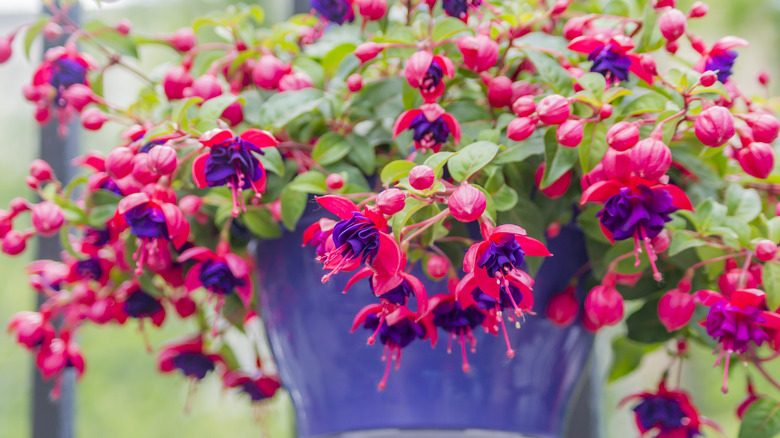Don't Let This Flowering Perennial Beauty Die — Bring It Indoors Before Winter Hits
Fans of pink and purple will naturally gravitate toward fuchsias (Fuchsia sp.), a popular perennial beloved for its colorful blossoms that can brighten up small spaces. They look equally gorgeous as houseplants as they do displayed outdoors in hanging baskets, and come in more than 100 different varieties. The hardier varieties can be grown outdoors in USDA Hardiness Zones 6 through 11, though more delicate ones are only suitable up to Zones 9 or 10.
If you live somewhere that gets very cold and dry, then this is a perennial you should bring indoors before winter. Since they're native to the tropical regions of Central and South America, fuchsias are fussy about exposure to frost and extreme temperatures. They need mild weather and at least some humidity to stay alive, so bringing them indoors for the season can prevent them from sustaining frost-related damage or dying altogether. With proper care and attention, they'll survive the transition to houseplant life. Come spring, you can bring them back outside for their growth season.
The best ways to successfully overwinter your fuchsias indoors
To support your outdoor fuchsias through the winter, it's important to figure out what type of fuchsias you're growing. That way, you can strategize and avoid any mistakes people make when overwintering plants. Are your fuchsias one of the hardy or half-hardy varieties? Then they might be able to withstand some exposure to lower temperatures, especially if you live in a region of the country that doesn't get super cold.
That said, tender fuchsias tend to be more popular. As the name suggests, these varieties are equal parts pretty and finicky. In other words, they're not even remotely cold hardy. They'll need some extra babysitting, and overwintering them can be trickier.
Acclimating your fuchsias is crucial to growing them indoors successfully. You can do so by moving them inside long before the ground frosts over for the first time. Keep the temperature in your home on the cooler side, ideally between 60 and 70 degrees Fahrenheit, and place your fuchsias in a spot where they won't get scorched by harsh, bright winter sunlight. It's also worth noting that you can overwinter fuchsias that have experienced colder weather and naturally entered dormancy — just give them a quick pruning, and store them in a cool room that's dimly lit. But don't forget about them! Be sure to water your plants a few times throughout the winter months, too.

